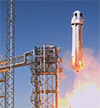Critical Location Decision Factor #9: Making a Dent in the Tax Bill With Exemptions
Although there are variations in which taxes are exempt in different jurisdictions, they not only offer an upfront break when a facility is being deployed, but also can result in ongoing tax savings.
Q4 / Fall 2013
Considering just the base tax rate is kind of like knowing the initial charge on a bill from the doctor’s office — nobody wants to pay that much, and few people ever do, once all of the discounts and deductions are figured in. That’s why tax exemptions are a key factor in choosing a site. Certainly, the base tax rates are important, but exemptions can make a big dent in the tax bill.
Actually, there are a number of ways the initial tax bill can be reduced — one is through tax exemptions, and the others are similar but with their own twists, says Darin Buelow, principal and the national leader for Deloitte Consulting’s Real Estate and Location Strategy practice. Most prominent are tax exemptions, tax credits, tax rebates, and tax abatements, he says, and “all four have different nuances.”
The key to exemptions, Buelow explains, is that “you never have to pay the tax. With tax rebates, you have to pay the tax, but assuming you do X, Y, and Z, you can get it back.” He adds, “With tax credits, it’s like a bucket full of credits. You typically apply them to state income taxes, and once you use the credits up, they’re gone.” Abatement, he says, seems a lot like an exemption in that you don’t have to pay a certain tax, though it’s typically for a set length of time, and the amount of the reduction may diminish as time passes until it eventually sunsets.
Valuable Addition to the Bottom Line
Tax exemptions, says Buelow, most often apply to sales taxes, and they often drive some sort of public policy goal. A state may, for example, levy sales tax on all purchases, but exempt the purchase of machinery and equipment that will be used in the manufacturing process.
That can be quite valuable, says Mark Sweeney, senior principal with McCallum Sweeney Consulting. If there’s normally a 5 percent sales tax but such equipment is exempt, that’ll save half a million dollars on a $10 million capital investment. Some states also exempt various components that go into the manufacturing process, from raw materials to energy — that not only adds to the value of the exemption, but makes it an ongoing savings, not just an upfront break when the facility is being deployed.
“One exemption that’s getting a little more common is a sales tax on the construction materials used for a factory,” Sweeney says. Buelow adds that states interested in attracting distribution centers are exempting such things as warehouse conveyors, racks, and forklifts.
“On the property tax side, there are classes of property that are sometimes exempt, as opposed to an abatement. The most common is pollution-control equipment,” says Sweeney. Property tax on inventory may also be exempt, depending on the jurisdiction.
Suffice it to say, as Buelow notes, “It’s complicated. There are a lot of variations.”
Project Announcements
Revere Plastics Systems Expands Clyde, Ohio Operations
12/23/2025
Japan-Based Imasen Bucyrus Technology Expands Bucyrus, Ohio, Operations
12/23/2025
Swire Coca-Cola, USA Plans Colorado Springs, Colorado, Production Operations
12/22/2025
LS Cable & System Expands Chesapeake, Virginia, Manufacturing Operations
12/22/2025
Anthro Energy Plans Louisville, Kentucky, Manufacturing Operations
12/22/2025
Novartis Expands Durham-Wake County North Carolina, Manufacturing Operations
12/21/2025
Most Read
-
The Workforce Bottleneck in America’s Manufacturing Revival
Q4 2025
-
Rethinking Local Governments Through Consolidation and Choice
Q3 2025
-
Lead with Facts, Land the Deal
Q3 2025
-
Investors Seek Shelter in Food-Focused Real Estate
Q3 2025
-
Tariff Shockwaves Hit the Industrial Sector
Q4 2025
-
America’s Aerospace Reboot
Q3 2025
-
The Permit Puzzle and the Path to Groundbreaking
Q3 2025



